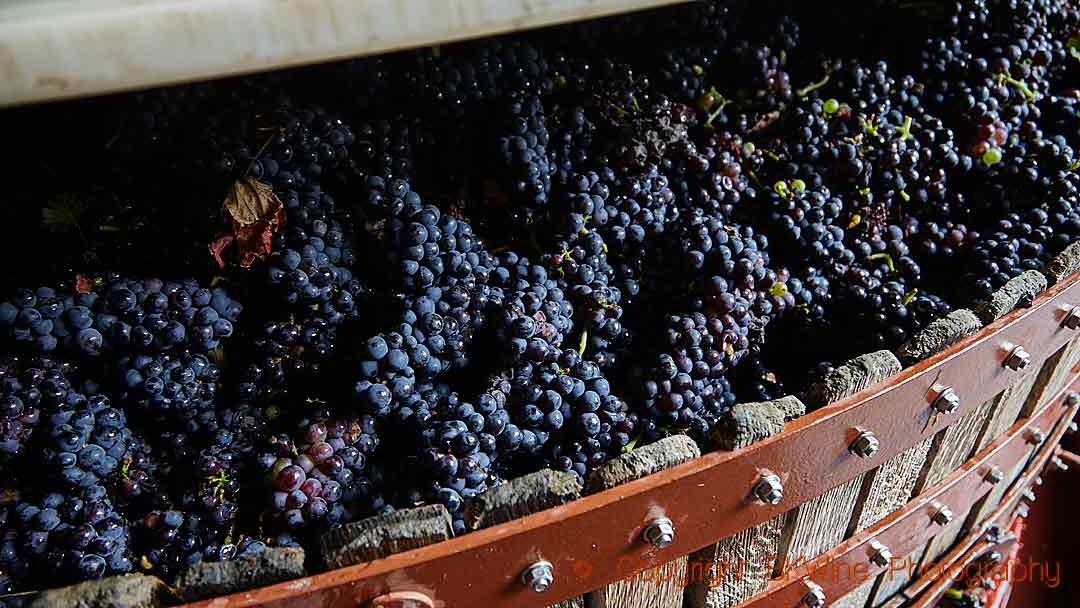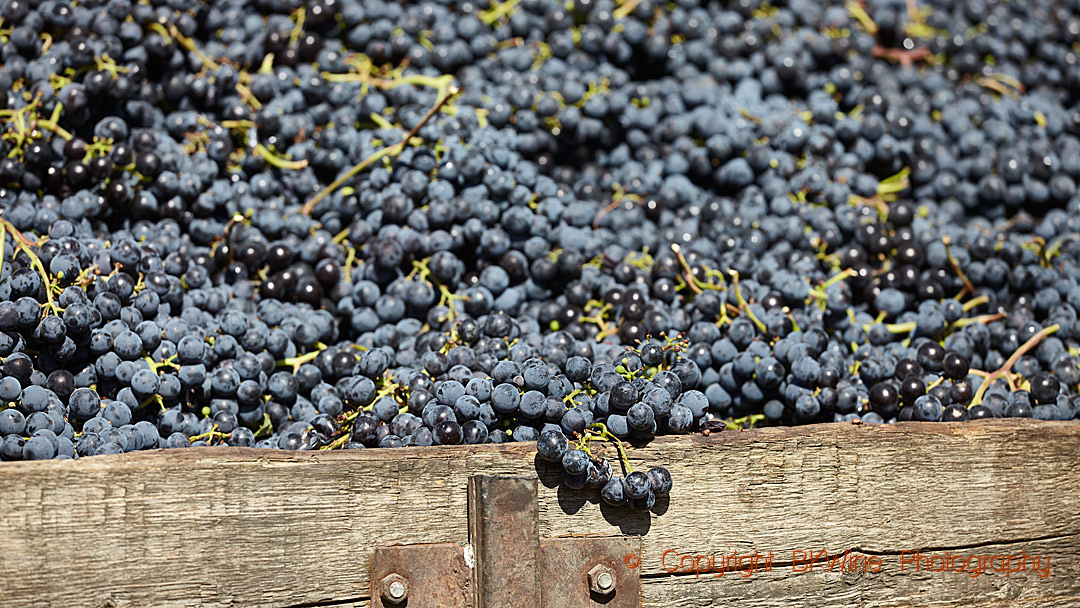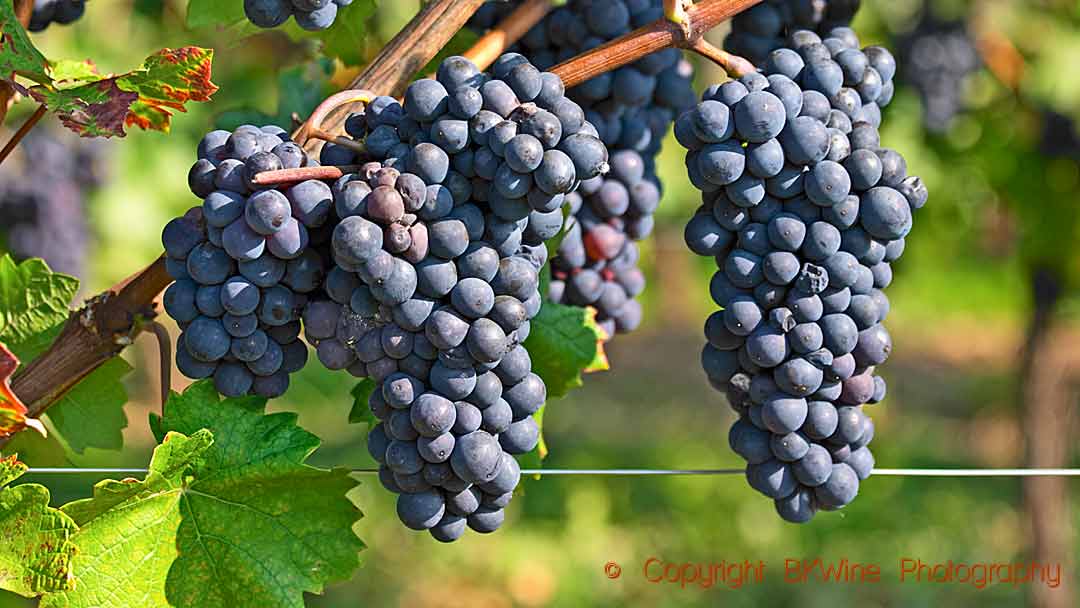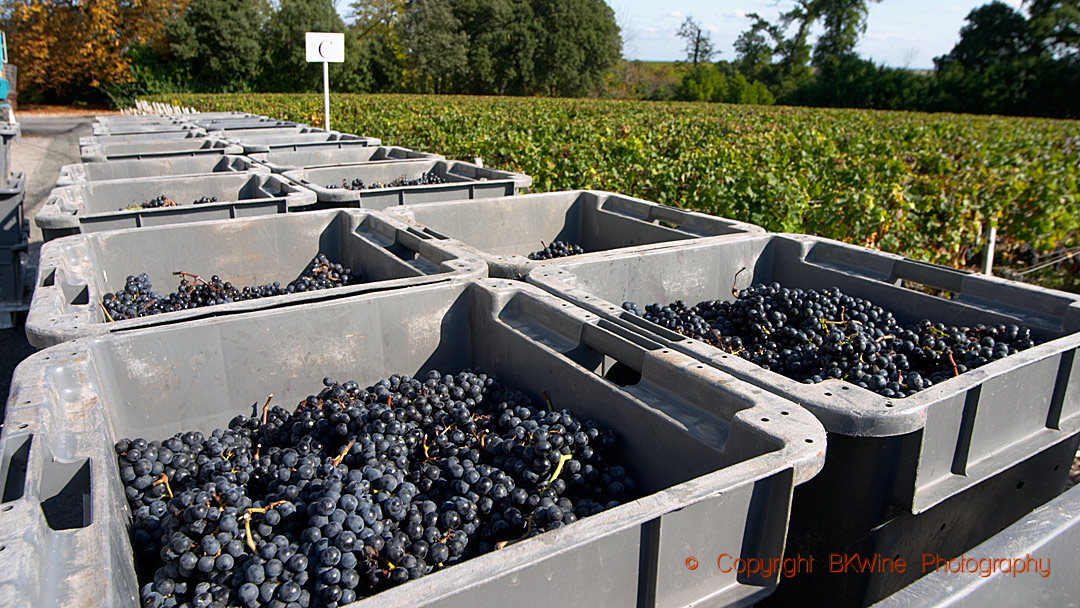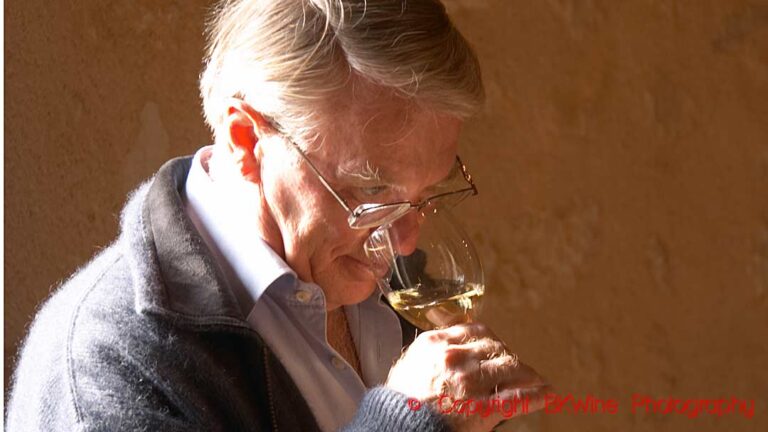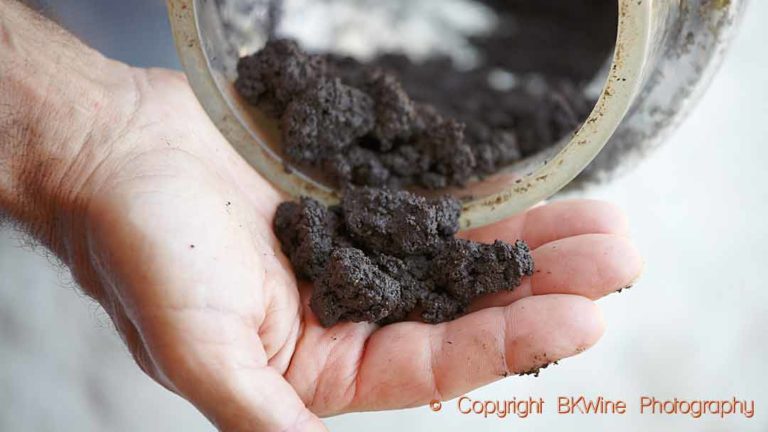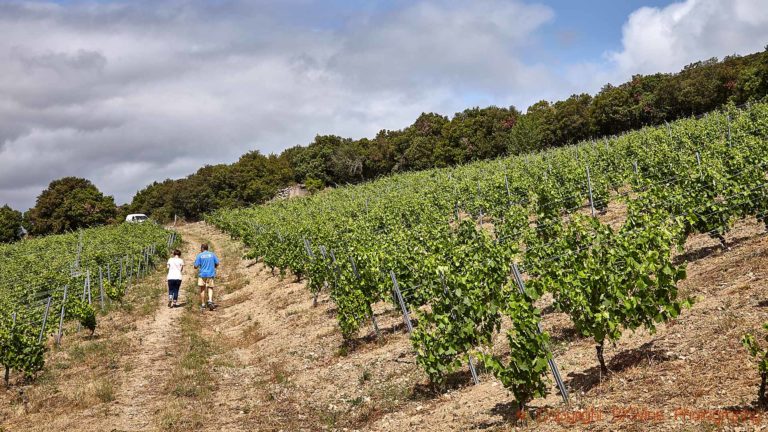Virtually all appellations in Europe have rules that limit the yield, such as “the maximum yield is 45 hectolitres per hectare”. The theory behind this is often said to be that “a high yield gives lower quality” and thus “keeping the harvest yields low increases the quality”. There are several holes in this reasoning. For example: Some of the most highly regarded wine regions allow very high yields. Some years with a very large harvest also give very good quality, not mediocre. And finally, perhaps the least known, the rules of maximum yields are sometimes a chimera; they are more and more eroded. Which doesn’t necessarily have to be a disadvantage. Let’s take a closer look at the details.
First some basics. “Yield” means, of course, how much you harvest from the land. But it can be measured in a number of different ways. The most common ones:
Hectolitres per hectare (hl/ha) is the most common, in other words, how many litters of wine can be produced per hectare. It can also refer to litres of must. Usually measured after the separation of the gross lees.
Kilo per hectare (kg/ha) or ton per hectare is used, among other places, in Champagne and in many countries outside Europe. How much a certain number of kilos per hectare correspond to in hectolitres per hectare depends on how hard you press the grapes. In Champagne, this is well defined in the regulations. 4000 kg of grapes may yield 2550 litres of must. Then 10,000 kg/ha is equivalent to 63.75 hl/ha. In other wine districts it can be different (more, or, less often, less) because there are not necessarily rules for how high pressure you can use or what volume you can take out during pressing.
Quintales per hectare (qt/ha or q/ha) means number of 100 kilos per hectare (a quintal is 100 kg). 10,000 kg/ha is therefore 100 qt/ha. It is often used in Italy and sometimes in OIV statistics.
Kilo per vine: Sometimes you come across more diffuse measures that have to do with how much grapes you take per vine, e.g. kilos per vine or number of bunches per vine. It seems to be more common in Eastern Europe. This is more difficult to translate to the other measurements without knowing more details.
Most appellation rules (in France) specify the maximum yield in hl/ha, le rendement. In some cases, it can vary slightly from year to year, but can never exceed a regulated defined maximum limit (rendement butoir). The exact rules are actually quite complicated so one should always read these types of “maximum yield” numbers with some caution.
The yield also has to do with the planting density (read more on BKWine Magazine here).
But back to the questions in the introduction. Let me take these points one by one.
Some regions allow very high yields
The usual logic is that the “better” an appellation is considered to be, the lower the maximum allowed yield, or simply “lower yields make better wines”. For example, an “AOP Bordeaux rouge” can have a relatively high yield, a maximum of 68 hl/ha (rendement butoir). AOP Médoc has a slightly lower maximum yield and AOP Pauillac even lower.
However, some prestige appellations allow a remarkably high yield. The main example is Champagne where you have a “rendement butoir” of 15,500 kg/ha, i.e. 99 hl/ha (in 2022 it was increased to 16,500 kg/ha, 105 hl/ha). Another example is Alsace where you have a “rendement butoir” of 96 hl/ha.
Some regions thus modify the maximum yield from year to year, although this is relatively uncommon. This usually has to do with the quality of the year and with what is called VCI, more on this later.
In Champagne, however, again a special case, it is part of the regulations to change the yield every year. Decisions are made in July or August on what the maximum harvest yield can be. This is only partially based on the year’s quality. Instead, it is used to manipulate the price of champagne. If demand on the market is low, the permitted yield is lowered to keep prices up. If demand is strong, the yield is raised.
Does low yield = high quality?
To a certain extent, the motto is true that low yields gives high quality, but one should not take that reasoning too far:
- It is generally believed that white wines, and in particular sparkling wines, can “tolerate” higher yields than red wines.
- A lot has to do with the weather. A year with good weather can produce great quantity and good quality. A year with bad weather can produce a low yield and at the same time lower quality. Two good examples: 2022 was a year (in France and large parts of Europe) of brilliantly good weather that produced large harvests. In Champagne, for example, they could have harvested far more than that year’s maximum yield (12,000 kg/ha), but did not. 2021, on the other hand, was a year of all the misery that the weather can bring, rain, hail, frost, more rain, etc. The harvests volumes were small and the quality mediocre in many cases.
- Regions with less rainfall, i.e. hot and dry areas, generally have lower yields. In the south of France, Languedoc-Roussillon, the yield can end up at 15-20 hl/ha (often with good wines as a result as well).
- Excessively low yields can give excessively concentrated wines lacking balance. (And excessively high yields can give diluted wines.)
- To give some examples.
Another thing to take into account is that the yield is not measured on each individual hectare but for the whole property, or if they make several different wines, per appellation. A producer can thus choose to harvest more in one field and less in another. For example, a producer in Champagne told us that they had part of the property in the prestigious Côte des Blancs, call it “field A”. But they also had land in another part of Champagne which they considered less interesting, call it “field B”. They explained that they harvested very few grapes on “Field B” but instead harvested far more than the maximum allowed yield on “Field A” which they believed produced high quality grapes. But thanks to the average of their harvest in fields A+B being within the allowable limit, it was okay.
One should therefore take this rule of thumb with a large pinch of salt.
Maximum yield is no longer maximum yield: welcome “VCI”
There are more and more special rules today which mean that the regulations on “maximum yield” are sometimes rather hollow.
An example: What is becoming increasingly common is what is called VCI, volume complementaire individuel, one of these special rules. VCI means that you are allowed to exceed the “usual” limit for maximum yield (e.g. you can harvest 74 hl/ha even though the limit is 68 hl/ha). The excess volume can then be saved and sold in a later year if it is a bad year with low volume. At the producer level, it is often presented as a type of “insurance”. It does not exist in all appellations, but is becoming more and more common. The first appellation to introduce this was Chablis perhaps fifteen years ago. (The first experiments with the method were carried out in 2005.)
A concrete example is Champagne, where in 2022 they were allowed to exceed the maximum harvest by 7% or 1000 kg of grapes per hectare. The decision was taken against the background of the previous year (2021) where it was well below a normal harvest volume. The “usual” maximum yield was set at 12,000 kg/ha. The usual “rendement butoir” is 15,500 kg/ha, but the limit was raised to 16,500 kg/ha. So even if the maximum yield, the volume you were allowed to sell, was 12,000 kg/ha in 2022, you were allowed to harvest an extra 4,500 kg/ha to add to the VCI. In this case, the VCI was thus divided into two parts: Part 1: the extra volume between the year’s maximum harvest of 12,000 kg and the usual absolute maximum limit (rendement butoir) of 15,500 kg, in other words 3,500 kg. Part 2: 1000 extra kilos because the rendement butoir was temporarily raised to 16,500 kg. (This second part is usually not given.)
The extra volume, the VCI, becomes a blocked reserve (supplementary volume) in the wine cellar that may only be used when permission is obtained from the authorities. It is usually simply called a “reserve”. (But it is a completely different thing than the “reserve wines” of older vintages that are talked about in Champagne and which are mixed into this year’s cuvée to give it more character. They are two completely different “reserves”.) Technically, VCI becomes a “rolling” reserve that is renewed every year until it is released and you get permission to use it.
If one year you get a very small harvest, so that you do not reach the permitted amount, you can then get permission to sell the VCI reserve. The volume complementaire individuel is released.
There is also a limit to how much VCI you can accumulate. It varies per appellation. In Champagne, it is currently a volume equivalent to 8000 kg per hectare (51 hl/ha), which therefore corresponds to around 60-80% of a year’s harvest. In other words, the producer can have more than half of one year’s harvest available in case of a bad year. In that way, it becomes a kind of “insurance”. If there is a very small harvest, the producer can “top up” with what they have in the VCI reserve. The magic of volume complementaire individuel.
The details of how this works in practice are quite complex. A in-depth explanation of VCI can be found here at the Confédération des appellaitons et des vignerons de Bourgogne (pdf).
VCI is present today in several regions around France. Similar rules are probably in place in other countries.


